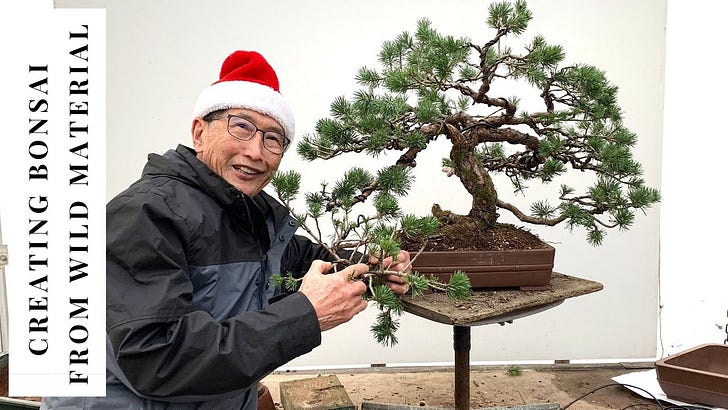I can pinpoint specifically the beginning of my interest in bonsai to this video covering an exhibition in Taiwan.
The floating camera and psychedelic audio have a real 1 hour relax with capybaras and vaporwave vibe. No people, no voiceover, just up-close views of the craziest trees you’ll ever see.
Come on! It looks fake. The roiling deadwood is sculpted from clay, not carved with a Dremel. This foliage is so perfect I could throw up. What an alchemical thing, I thought after my fourth view through, to transform simple trees into otherworldly artifacts.
As I struggled with the basic concepts of the practice, Bonsai Youtube became a frequent source for inspiration. Now it’s the next best thing to a live demo. On downer days following a broken branch or the death of a tree, watching bonsai success elsewhere reminds me why I’m doing this.
Today I want to show you some of my favorite channels.
Please take my recommendations as what they are: personal preferences from a far-from-comprehensive set of sources. This isn’t secret, hard-won knowledge. I haven’t even begun to go through David Easterbrook or Nigel Saunders’ backlist. What I can share is my own experience with Bonsai Youtube and how I think its players fit together in a content ecosystem.
Peter Chan, the owner of Herons Bonsai in England, is the first expert that many beginners find. He’s an OG of the Western bonsai world who started working with trees in the 1960s and opened his own nursery in 1984. His channel is all about making bonsai accessible to newcomers. Not only does he demystify core concepts, he embodies the beginner’s mind approach to bonsai in a totally charismatic way. Just watch him work on visitors’ trees in front of the crowd. There’s a Mr. Rogers quality to the man.
In addition to trippy videos like the Taiwan exhibition, the Bonsai Empire channel does garden tours of bonsai artists’ trees. MTV’s Cribs for nerds. I like it.
The time-lapse nature of Bonsai Releaf’s videos means he posts rarely, but when he does, wow. Above is a 22-minute distillation of a year’s work on a tree, taking it from raw nursery stock to a finished bonsai. Each scene acts as its own little lesson; I say ‘scene’ because these videos are shot more like short films than tutorials. Architectural in scope, intimate in framing.
Ryan Neil is the founder of Bonsai Mirai, a studio in Oregon, and he and his team run a subscription-based video education service called Mirai Live. He’s one of the leading artists in a growing movement to define North American bonsai as a distinct practice, separate from traditional Japanese aesthetics. There’s a nice article on Neil and the subject of regional bonsai culture that I encourage you to read. If Peter Chan is the Mr. Rogers of Bonsai Youtube, Neil is Mr. Spock. Beginners are welcome, but you better be prepared to jot down how to pinch an elongating species. The horticultural advice is superb and the production has its own cinematic quality. It’s all very American, in many senses of that word.
Now off you go to Bonsai Youtube! I encourage you to drop a link to your favorite Youtube video in the comments below. I’ll start.
Tree reading
Surprised as I am to agree with anything on MarketWatch, this op-ed is right. Planting trees to capture carbon is a weak climate change stopgap. Cutting fossil fuels should lead any policy agenda. [MarketWatch]
On the other hand, preserving old growth forests is an important climate change goal, not just for its superior carbon capture, but for the vital density of its biodiversity. I enjoyed this tour of an old growth forest in Baltimore’s city limits. [Chesapeake Bay Journal]



